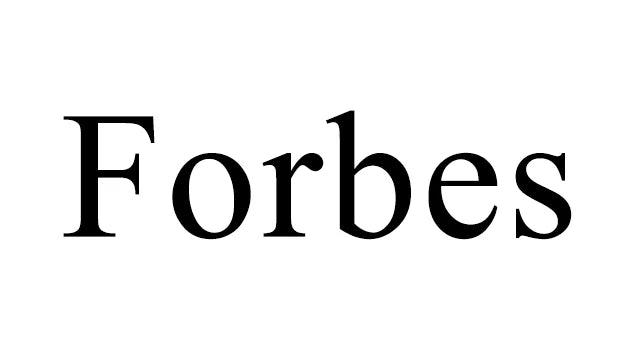We are featured by Forbes. Their article entitled "The Best Pillows for Side Sleepers, Tested by Our Editors"
See the excerpt below.
Many people prefer to sleep cuddled up on their side, and if you’re one of them you have a unique set of requirements for finding the perfect pillow. The best pillows for side sleepers are thick and firm, to help maintain spinal alignment at night, says Dr. Jessalynn Adam, M.D., a physical medicine and rehabilitation physician at OrthoVirginia.
The right head support is crucial for preventing aches and pains, which is why we tested the industry’s most highly rated picks, to see which ones deserve a spot on your mattress. Because every person’s needs are different, we made sure to select a range of options to help you settle on the ideal pillow for your preferences. These are the best pillows for side sleepers, whether you’re after an adjustable-loft pick, something to help keep you cool or a pillow to ease pain.
What Kind Of Pillow Is Best For Side Sleepers With Bad Posture?
If you’re a side sleeper with bad posture, you want to invest in a pillow that helps correct your alignment as you sleep. While any pillow with the right height can do this, a contoured pillow like the Honeydew Sleep Scrumptious Side Pillow is typically best for holding your head and neck in neutral alignment as you sleep.
What To Consider When Buying A Pillow For Side Sleepers
For a healthy spine and reduced pain, side sleepers need to keep their head and neck in proper alignment while resting, and a good pillow can do just that. In fact, “If you’re waking up with stiffness or pain, your pillow might be the culprit,” says Radermacher. Additionally, tossing and turning at night may indicate your pillow isn’t supportive enough. These are the main factors to consider before buying a pillow as a side sleeper.
Price
The best pillows for side sleepers can range from $50 to $200 depending on the material and construction. That said, quality pillows can often be found for less than $150. Generally, pillows made of polyfoam or down alternatives are less expensive than their memory foam, latex and down counterparts.
Materials
The fill and material of a pillow is key because it can completely change the way it feels underneath your head. Radermacher recommends a firm memory foam block pillow over a more malleable one with fill like down, polyfill or natural fiber materials, but it’s also worth considering other fills. “Don’t be afraid to try different pillows until you find one that works for you,” adds Radermacher. “It might take some trial and error, but finding the right pillow is worth it.”
- Memory foam: This is one of the most common fill types on the market. These are often hypoallergenic and adjustable, and they typically can be refluffed easily. Some memory foam pillows can also be tossed in the wash.
- Feather: Feather pillows are a more traditional pillow fill. These pillows are durable and plush. They’re also typically more affordable than down pillows.
- Buckwheat: This pillow type is filled with buckwheat husks. Buckwheat allows for plenty of air circulation and can be moved around easily. These husks may rustle together when you move the pillow.
- Down/down alternative: Down is a premium pillow fill. Down pillows offer plushness and moldability, and they tend to last longer than their counterparts filled with synthetic materials. However, down alternative pillows are often more affordable.
- Latex: This is a soft fill that’s naturally antifungal and hypoallergenic. Latex pillows are also known for their durability.
- Polyfoam: Polyfoam tends to be more balanced, affordable and cooling than memory foam counterparts. These pillows typically do not lose their shape and are valued for their supportive feel.
Shape
These are some of the most common shapes you’ll come across while shopping.
- Cutout: A cutout pillow has an unconventional shape. This typically involves a half-moon cutout where the neck goes, to lend added support to the area.
- Gusset: These pillows have a traditional rectangular shape. They also have an extra piece of fabric (the gusset) that expands for more structure.
- Contour: Contour pillows typically have a curve on the top or sides of the pillow (or both). These cradle the head and neck, and provide more support than a pillow with loose fill.
Firmness
Most pillows come with different firmness options, but Radermacher strongly recommends at least a medium-firm pillow for side sleepers. “Anything softer usually ends with your head sinking too deep while you sleep,” he says.
Loft
The loft of a pillow refers to its height when your head is on it. Choosing the wrong loft can lead to neck pain, shoulder pain and tension headaches. “Your pillow should lift your head high enough that it keeps your neck in line with your spine, but not so high that it cranes your neck to the opposite side,” Radermacher says.
Adjustability
You might want to look into an adjustable pillow, which allows you to remove or add fill to make it as plump as you want it to be. “A customizable fill level can help you figure out the loft that works best for your body,” Radermacher says. This isn’t a necessary option, but it certainly is a nice feature.
Support
Pillows should provide some level of support, particularly if you deal with neck pain, says Anastasio. “If you have neck discomfort, a supportive pillow that maintains neutral alignment—meaning the neck is not angled left, right or forward—is best,” he says. That typically means searching for a pillow with a medium loft.
Pressure Relief
Side sleepers with neck or shoulder pain may benefit from a pillow that provides pressure relief. These often are memory foam pillows, although any fill can help. Ultimately, alignment is what’s most important for pain relief, says Anand. “Look for a pillow that keeps your neck parallel to the mattress and that adapts to your specific sleep position,” he says.








